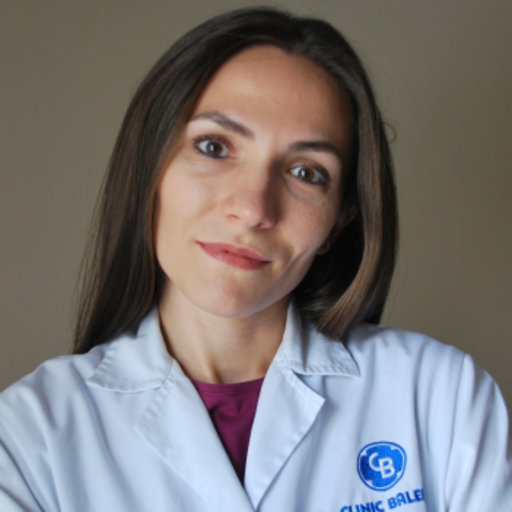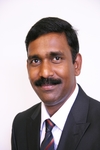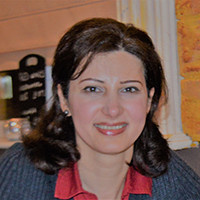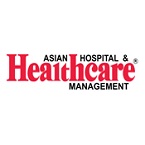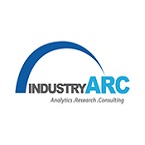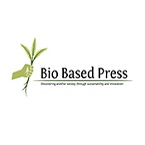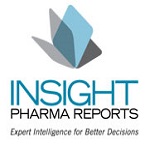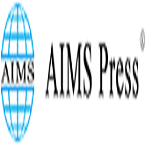Theme: Theme: Revolutionizing Skin Care Through Advances in Dermatology & Cosmetology
globaldermatology-2023
Global Dermatology-2023 is excited to invite everyone to its prestigious event that is 22nd International Conference on Dermatology and Skin Care Sciences, which will be held July 17-18, in the charming city of Zurich, Switzerland. Our goal is to bring together creative thinkers to provide talks that are idea-focused on a range of dermatology and skin related scientific issues. We hope to do this by bringing people together to share knowledge, be inspired, be amazed, and to engage in meaningful conversations. The main focus of this conference is “Revolutionizing Skin Care Through Advances in Dermatology & Cosmetology”.
World-renowned professors, scientists, researchers, students, and dermatologists will gather at the Global Dermatology-2023 conference to discuss approaches to a range of dermatology and skin-related problems. This two-day scientific conference includes keynote lectures from Senior Scientists and industry experts, panel discussions, poster competitions, and a Young Researcher Forum. Interactive Sessions & Sub-sessions on innovation and new trends in surgery, trichology, skin care, and cosmetology are also included. The conference schedule will feature lively panel discussions including eminent and thought-provoking speakers. To keep dermatological practitioners informed about issues affecting disease expectations, identification, and treatment, we want to offer a variety of information.
Why to attend Global Dermatology-2023?
22nd International Conference on Dermatology and Skin Care Sciences is put on by, a company that hosts 3000+ global events annually, including 1000+ conferences, 1000+ symposiums, and 1000+ workshops on a variety of topics in the fields of medicine, pharmaceuticals, clinical research, engineering, science, and technology, as well as business and management. Conferences organises a number of conferences where knowledge is shared through debates, roundtable discussions, poster presentations, seminars, symposia, and exhibitions, opening up new avenues for the treatment of diseases using modern science, technology, and research.
Meet Your Market's Needs This is frequently your only clear opportunity to meet the most important group of members from the Universities, Research facilities, and Hospitals, as people from all over the world are interested in learning about Dermatology issues. At this two-day event, you can direct performances, disseminate information, engage with current and potential speakers, make a sprinkling with a replacement product, and receive name recognition. Global Dermatology-2023 will feature incredibly well-known speakers, the most recent techniques and methods, as well as the most recent advancements in dermatology and related subjects.
The ideal setting for forming new partnerships and collaborations.
Feedback from previous exhibitors suggests a wealth of inquiries from conference goers.
Building networks in both business and academia.
90% of the conference attendees are the main decision-makers when it comes to acquiring lab equipment.
- Dermatology scientists and students
- Dermatology specialists
- Dermatology professors at medical schools
- R&D Companies
- Business Entrepreneurs
- CEO’s of Organizations
- Associations and Societies for Dermatology
- Cosmetic surgeons / Plastic Surgeons / General Surgeons
- Experts in spas and cosmetics
- Commercial Entrepreneurs
- Training Facilities
- Companies that manufacture medical devices
- Skin specialists
- Dermatology/Cosmetology Scientists
- Skincare Residents
- Skincare Surgeons
- Medical Schools
- Pharmaceutical Businesses
- Dermatologists/Cosmetologists
- Skincare Nurses
- Independent Dermatology Researchers
- Diagnostic laboratory professionals
- Marketing, Advertising and Promotion Agency Executives
Session 1: Cosmetic Surgery
Cosmeticsurgery is a special approach that focuses on enhancing look through surgery or therapeutic techniques. Any area of the body, including the head, neck, and torso, is amenable to restorative surgery. Restorative surgery is optional, usually based on a person's subjective choice when they choose to undergo an operation or intrusive therapeutic procedure that advances their physical appearance but may also worsen their wellbeing and look. Various techniques are used in restorative surgery. Each procedure has a distinct claim centre and associated burdens.
- Facial Contouring
- Hair Transplantation
- Breast Augmentation
- Skin Rejuvenation
Session 2: Surgical Dermatology
Surgery that specialises in treating all skin disorders is called dermatologicalsurgery. It connects plasticsurgery and dermatology since dermatological surgical procedures frequently involve eliminating skin lesions and repairing the skin using drugs or reconstructive surgery techniques.
- Moles, Cysts
- Lipomas, Fibromas
- Papilloma’s
- Actinic keratosis or Seborrhoeic keratosis
- Melanomas
- Telangiectasia
Session 3: Aesthetic Dermatology
The goal of aesthetic dermatology is to minimise physical flaws, treat or prevent skinageing, or simply enhance the appearance of healthy people's skin. It's common to think that certain methods, techniques, or instruments will make it easier to accomplish these objectives.
The phrase "aestheticmedicine" refers to a broad range of medical disciplines that target improving cosmetics appearance by treating issues like scars, skin laxity, wrinkles, moles, liver spots, excess fat, cellulite, undesirable hair, skin discoloration, and spider veins.
- Wrinkle Relaxers
- Ichthyosis
- Soft Tissue Fillers
- Chemical Peels
- Treatment of Skin Discoloration
Session 4: Dermatopathology
Dermatopathology is a collaborative specialisation of dermatology and pathology, sometimes known as surgical pathology that focuses on the microscopic and molecular investigation of cutaneous diseases. It also includes fundamental assessments of the possible origins of skindiseases.
- Lichen Planus
- Mycosis Fungoides
- Human Papilloma Virus Infection
- Dermatitis Herpetiformis
Session 5: Mohs Surgery
One of the most often utilised surgical methods for treating skin cancer is the Mohssurgical procedure. Thin layers of skin that contain cancer are gradually removed during the Mohs procedure, and any remaining tissue is then analysed to ensure that it is cancer-free. The Mohs surgical procedure is also known as Mohsmicrographicsurgery. All of the various skin-related issues and surgical procedures can be discussed during this session, along with skin cancer.
- Cryosurgery
- Dermabrasion
- Imiquimod
- Chemotherapy
- Debridement
Session 6: Skin-Toxico Pharmacology
The study of the harmful effects of chemicals on living creatures is under the purview of toxicology, a branch of biology, chemistry, and pharmaceuticalsciences. It also involves examining the potentially harmful effects of chemical, biological, and physical changes in organic structures that determine the severity of injury to living things. All areas covered by toxicology and pharmacology will be addressed in this session.
- In vitro skin-toxic pharmacological models
- Treatment & diagnosis of erythema toxicum
- Nano materials penetration in treatment of skin disorders
- Plasminogen activators and inhibitors
- Cutaneous barrier dysfunction
Session 7: Skin Rejuvenation and Facial Rejuvenation
Several techniques, including warm, synthetic, mechanical, infusion, and light, can be used to rejuvenatetheskin. A remedial procedure (or a group of restorative drugs) called facial restoration aims to revive the face's vernal appearance. The restoration of the face typically involves both deliberate and careless choices. The level of intrusiveness and depth of treatment varies between methods. Through specialised procedures, facialreconstruction, and skin alterations, surgeries will restore facial equilibrium. Non-surgical procedures will focus on the precise depths of facial structures and address specific facial issues like wrinkles, skin laxity, physiological status, and scars.
- Synthetic restoration with substance strips
- Photograph revival with light heartbeats from lasers or lights
- Infusions for revival with Botox, fillers, collagen
Session 8: Neonatology and Perinatology
The Neonatology department plays a vital role in paediatric disorders and the medical status of new-borns and infants. Paediatrics is hospital-related teaching. For new-borns, this is mainly possible in intensive care units. A key component is paediatricperinatology, which addresses the embryo and related health concerns during incubation as shown in paediatric neonatology.
- Disorders of the Neonatal Period
- Unit for Neonatal Intensive Care
- Neonates and Epilepsy
- Neurology of the new born
- Neonatal Respiratory Conditions
Session 9: Nano technologic advancement in treating skin disease
Nanotechnologies demonstrate progress in the realm of experimentation by increasing the item's effectiveness through the delivery of creative results. The use of nanotechnology is growing in the cosmetics industry. For disorders like wrinkles, photo ageing, hyperpigmentation, dandruff, and hair damage, Nanocosmeceuticals have been used for skin, hair, nail, and lip care.
The use of conventional conveyance requests has been replaced by the use of novel Nano carriers such as liposomes, noisome, Nano emulsions, micro emulsions, stable lipid nanoparticles, nanostructured lipid transporters, and Nanospheres. These cunning Nano carriers benefit from improved skin penetration, coordinated and timely medication release, greater potency, and site-specific targeting.
- Nano cosmeceuticals
- Nanostructured lipid transporters
- Carbon nanotubes
- Gold nanoparticles
- Nano emulsions
Session 10: Teledermatopathology
It is a nonclinical telemedicine tool used mostly for the examination of cutaneous histologic samples. There are many research works available that discuss the evaluation of tele dermatology’s diagnostic concordance. Tele dermatology is used to compare its diagnostic capabilities to our traditional in-person examinations.
- E-Prescription
- E-healthcare
- E-pharmacy
- Telemedicine
- Tele cosmetology
Session 11: Pediatric Dermatology
Pediatricdermatologists become experts at identifying children's skin conditions and treating them successfully, including sensitive child care. They carefully and medically treat skin conditions including moles and other skin sores. There are more childhood physicalanomalies, such as the elongation of the youth vein, that lend credence to the idea that they don't occur in adults. Extremely young children may exhibit exceptional symptoms of a disease or problem under generally understood circumstances when receiving psoriasis treatment.
- Puerile seborrhoea dermatitis
- Herpes zoster
- Vascular and pigmented skin pigmentations
- Psoriasis in adolescence
- Popular urticarial
Session 12: Oral and Maxillofacial Surgery
The body's exterior and some mouth-related parts Surgery involves treating various conditions, illnesses, and abnormalities of the head, neck, jaws, and soft tissues of the face, mouth, and maxillofacial region. Typical oral surgical challenges, jaw and inborn facial disproportion, face injuries, mouth cancer, diseases of the salivary organs, temporomandibular joint abnormalities, and other beneficial pathologies are among them. Oral and maxillofacial surgeons treat patients of all ages, from new-borns to the elderly. They will take care of children who were born with cranial or facial deformities like cleft lip or palate.
- Tooth extraction
- Dental Bone grafts & implants
- Periodontal Surgery
- Sleep Apnea surgery
- Cleft lip and palate repair
Session 13: Trichology and Hair Transplant
The scientific study of hair and scalp health is the focus of the dermatology subspecialty known as trichology. It comprises identifying the causes of hair loss, breakage, thinning, miniaturisation, and scalp conditions and treating them appropriately. A medical procedure called hair transplantation involves moving hair follicles from one bald or thinning area of the body to another. It is most frequently used to treat MalePatternBaldness (MPB). Grafts containing hair follicles that are genetically resistant to balding (such those located on the back of the head) are applied to the bald scalp during this minimally invasive treatment. Scars from previous hair transplants, pubic hair, chest hair, eyelashes, eyebrows, beard hair, and beard hair can all be repaired with hairtransplantation.
- Endocrine system and hair growth
- Hair root organization
- Hair follicle stem cells
- Facial and skin rejuvenation techniques
- Laser applications in cosmetic surgery
Session 14: Liposuction
Liposuction is a cosmetic surgery that eliminates excess fat that diet and exercise don't appear to be able to get rid of. In order to modify a person's shape, the surgeon typically performs this operation on their hip, belly, thigh, buttocks, back, arm, and face. This is also possible with a belly tuck, breast reduction, and facelift.
- Tumescent liposuction
- Ultrasound assisted liposuction
- Laser assisted liposuction
Session 15: Craniofacial Surgery
A range of congenital (present at birth) and traumatic deformities of the face, skull, and jaws, as well as their connected structure and post-operative deformity, are addressed by the subspecialty of craniofacial surgery, which includes plastic, oral, maxillofacial, and head and neck surgery. Doctors of craniofacial surgery can correct the following conditions: Congenital conditions like craniosynostosis can lead to a range of issues such intracranial weight gain, skull distortion, visual loss, and formative report. In surgical intercession, a multidisciplinary approach is used, including paediatric neurosurgeons.
- Bone grafting
- Genioplasty
- Craniosynostosis surgery
- Distraction osteogenesis
- Facial reanimation
- Microtia
Session 16: Otoplasty
The term "otoplasty" is another name for cosmetic ear surgery. This is the procedure for altering the ear's size, position, and form. Even those who were born with ear abnormalities may be subjected to this. Only until the ear has attained its full size is otoplasty possible (usually it would be after age 5-adulthood). The hazards of otoplasty include scarring, ear placement, and issues with the stitches.
- Ear augmentation
- Ear reduction
Session 17: Burn Care and Surgery
Our outside look is destroyed and our sensation is diminished when we have a major wound or burn. Reconstruction of the damaged area will be aided by the burn surgery. Acute and reconstructive burn surgery fall under these categories. Acute burn surgery refers to the treatment that is provided right away by trauma surgeons following the burn. Reconstructiveburnsurgery will help the burn scars look better on the outside.
- Skin grafts
- Debridement
- Amputations
Session 18: Dermoscopy
Skin surface microscopy is used for dermoscopy, sometimes referred to as epiluminoscopy and epiluminescent. Examining the skin lesion with pigment. It is a non-invasive method for evaluating the epidermis, dermoepidermal junction, and papillary dermis colours and microstructures that are not immediately visible to the human eye. A strong illumination system and an extremely sophisticated magnifying lens are essential for dermatoscopy. This method is useful for identifying pigmented skin lesions. This procedure should only be utilised by professionals due of its complexity.
- Dermatopathology
- Tele-Dermoscopy
- Mobile tele dermatology
- Covid19 and teledermatology
- Health Care Management
Session 19: Veterinary Dermatology
Veterinarian dermatology deals with the diagnosis and treatment of problems affecting an animal's skin, ear, hair, nail, hoof, or mouth. Dermatology in veterinary medicine focuses on the diagnosis and care of conditions affecting an animal's skin, ears, fur, nails, hooves, or mouth. It is very important for veterinary dermatologists to learn how to treat allergic skin conditions. Other specialised diagnostic methods include intradermal allergy testing and serological allergy monitoring.
- Skin allergies
- Environmental sensitivities
- Bite marks left by parasites
- Autoimmune skin condition
- Parasitic bites
Session 20: Blepharoplasty Surgery
A cosmetic procedure called blepharoplasty may be used to correct eyelid abandons, distortions, and distortions. To correct the aesthetics of the facial eye ranges. You'll make eyes look more relaxed and refreshed by reducing slack and puffy eyelids. From time to time, doctors advise eyelid surgery to improve vision for therapeutic purposes. Although eyelid surgery is widespread, there may be significant risks and severe problems. When you are older than 30 years old, you start to experience drooping eyelids. Usually the best age for blepharoplasty, but younger people can nevertheless get the procedure.
- Epiphora and eye discomfort
- Diplopia
- Eye injury
- Abnormal scarring
- Orbital bleeding with loss of vision
- Superficial ecchymosis and bruise
Session 21: Psycho-Dermatology
A relatively new subspecialty of psychosomatic medicine is psycho-dermatology. It is the end result of the interplay between the skin and the psyche. While psychiatry concentrates on "internal" nonvisible illnesses, dermatology focuses on "external" visible problems. Ectoderm bridges the gap by uniting the two fields of study at the embryonic stage. Skin and the immunological and neuroendocrine systems have intricate interactions.
Skin responds to both endogenous and external stimuli, taking in and integrating environmental cues as well as letting others know about interior conditions. A disorder in which the interaction of the mind and the skin is present is known as a psych dermatologic disorder. Psychophysiological disorders, primary psychiatric disorders, and secondary psychiatric disorders are the three categories into which psychdermatologic illnesses are divided.
- Psychoneuroimmunology
- Psychophysiological Disorders
- Psychiatric Disorders with Dermatological Symptoms
- Dermatological Disorders with Psychiatric Symptoms
Session 22: Cosmetic Dentistry
A Cosmeticdental operation is a dental procedure. This will enhance the look of your smile as well as the appearance of your teeth and mouth. Comparatively speaking, the process employed in cosmetic dentistry is relatively straightforward. Dentistry materials manufactured in a dental laboratory include inlays and onlays.
- Whitening
- Teeth reshaping
- Orthodontic treatment
- Implants
- Crowns
- Veneers
- Gum lifts
Session 23: Pigmentary Disorders
Disorders of skin pigmentation have an impact on skin colour. While some pigmentation disorders only affect a small portion of the skin, others affect the entire body. Skin with an excess of melanin is dark, whereas skin with an insufficient amount is light. Sun exposure, pregnancy, and Addison's disease are all potential causes of skin darkening. On the other hand, vitiligo causes areas of the skin to become lighter. A hereditary condition associated with skin colour is albinism. A person with albinism may be colour-blind, have lighter skin than average, or have uneven skin where some parts lack colour
- Albinism
- Melasma
- Pigment loss after skin damage
- Vitiligo
North America will represent more than 43% of worldwide revenues in 2021. The regional market is anticipated to maintain its leadership during the projection period while expanding at a steady CAGR. Some of the main factors driving regional market expansion include the increased incidence of skincancer and other skin conditions including eczema and rosacea, as well as the expanding acceptance of cosmetics procedures. At some point in their lives, 80% of Americans will experience acne vulgaris, and 20% of those people will experience severe acne, which can cause long-term health and psychological harm.
The demand for minimally invasive aesthetic procedures, particularly in developed countries, is expected to increase by more than 9.6 percent between 2016 and 2028. Product development that provides a high level of customer experience also has a positive impact on demand during the forecasted period.
The market for cosmetics in Europe is anticipated to expand significantly between 2022 and 2029. According to Data Bridge Market Research's analysis, the market is predicted to develop at a CAGR of 5.2% from 2022 to 2029 and reach USD 81,537.16 million. The France beauty and personal care products market for Global Dermatology-2023 is projected to witness a CAGR of 2.87% during the forecast period, 2022 – 2027.
The French Beauty Federation (FEBEA) reports that the first half of 2020 experienced a 10% decline in sales for the whole French cosmetics business. Hygiene sales increased by 50% while sales of beauty items declined by 25% as consumers' attention turned from hygiene products to hygiene. France saw a 14% decline in cosmetics exports and a 12% decline in investments, which is less than the national averages of 18% and 16%, respectively.
Importance of Cosmetics:
Global Dermatology-2023 is the study and application of beauty treatment. Hair styling, skin care, cosmetics, manicures and pedicures, non-permanent hair removal techniques like waxing and sugaring, and permanent hair removal procedures like electrology and strong pulsed light are some examples of speciality areas.
Using cosmetics will enhance your appearance. There have been many millennia of makeup. Because so many individuals desire to look and feel young and attractive, cosmetics have become more significant. These days, it's easy to find cosmetics in the shape of lotions, lipstick, perfumes, eye shadows, nail polishes, hair sprays, and other products. Following the use of the base cream, additional cosmetics like face powder give the skin a radiance.
Metrics:
Global Dermatology-2023 welcomes CEOs, Director and Heads of Dermatology Departments, Vice Presidents, Scientists, Professors, Young Scientists and Researchers, Associations and Societies in Cosmetics and Dermatology, Business Professionals, Students, Industrial Experts, Cosmetics Industries, Pharmaceuticals and Cosmetics firm, Entrepreneurs to discuss their original research findings through oral, video, and poster presentations, Global Dermatology-2023 focusing on Cosmetics and Dermatology.
Conference Highlights
- Cosmetic Surgery
- Surgical Dermatology
- Aesthetic Dermatology
- Dermatopathology
- Mohs Surgery
- Skin-Toxico Pharmacology
- Skin Rejuvenation and Facial Rejuvenation
- Neonatology and Perinatology
- Nano Technologic Advancement in Treating Skin Disease
- Teledermatopathology
- Pediatric Dermatology
- Oral and Maxillofacial Surgery
- Trichology and Hair Transplant
- Liposuction
- Craniofacial Surgery
- Otoplasty
- Burn Care and Surgery
- Dermoscopy
- Veterinary Dermatology
- Blepharoplasty Surgery
- Psycho-Dermatology
- Cosmetic Dentistry
- Pigmentary Disorders
To share your views and research, please click here to register for the Conference.
To Collaborate Scientific Professionals around the World
| Conference Date | July 17-18, 2023 | ||
| Sponsors & Exhibitors |
|
||
| Speaker Opportunity Closed | Day 1 | Day 2 | |
| Poster Opportunity Closed | Click Here to View | ||
Useful Links
Special Issues
All accepted abstracts will be published in respective Our International Journals.
Abstracts will be provided with Digital Object Identifier by






